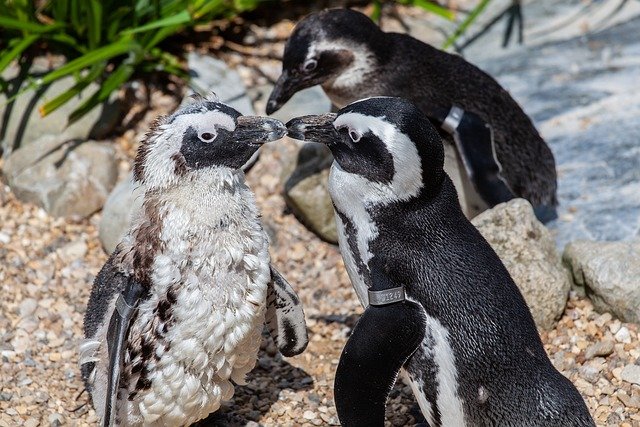"Adaptations of Penguins: How These Flightless Birds Thrive in Harsh Environments"

Adaptations of Penguins: How These Flightless Birds Thrive in Harsh Environments
Penguins are fascinating creatures that have evolved several adaptations to survive and thrive in some of the harshest environments on Earth. Despite being flightless birds, penguins have developed unique characteristics that allow them to excel in their marine habitats. Here are some of the key adaptations of penguins:
1. Insulating Plumage
Penguins have a dense layer of overlapping feathers that help them stay warm in cold waters. This insulating plumage traps a layer of air close to their bodies, providing excellent thermal protection against the frigid temperatures of their Antarctic or sub-Antarctic habitats.
2. Counter-current Heat Exchange System
Penguins have a specialized network of blood vessels in their legs and flippers that allows them to regulate their body temperature efficiently. This counter-current heat exchange system helps prevent heat loss and keeps their core body temperature stable, even when swimming in icy waters.
3. Streamlined Body Shape
The streamlined shape of penguins' bodies is another adaptation that enables them to move effortlessly through the water. Their torpedo-like bodies reduce drag and allow them to swim at high speeds, making them efficient hunters of fish, squid, and krill.
4. Flipper Adaptations
Penguins' flippers have evolved into powerful paddles that provide propulsion in the water. These flippers are used for steering, braking, and diving, allowing penguins to navigate the depths of the ocean with precision and agility.
5. Salt Glands
To cope with the high salt content of their marine environment, penguins have specialized salt glands located near their eyes. These glands help them excrete excess salt from their bodies, allowing them to maintain a proper balance of salt and water levels.
In conclusion, penguins have a remarkable set of adaptations that enable them to thrive in some of the most extreme environments on the planet. From their insulating plumage to their streamlined bodies and efficient heat exchange systems, these flightless birds have evolved a suite of features that make them perfectly suited for life in the cold, unforgiving waters of the Antarctic and beyond.

Keep up the good work. 👏🎵
Dear beloved Hive creator,
Coding poet Gudasol here to support you sharing your art + life on Hive.
As a fellow creator, I know how hard it is to get the word out there.
I built cXc.world to help creators like us get more support from the blockchain community + beyond.
Share your music on cXc.world, and copy the Markdown for a easy post includes embedded players for Spotify, Youtube, Soundcloud.
That way, you can earn HIVE + stack streams on centralized platforms, as they do still matter.
Not a music creator? No problem. You can still use cXc.world to find + share music you love.
What's next?
Preview the next evolution of cXc, Tetra.earth.
Expose local music from your area!
We're helping grassroots musicians, and you can too by adding their music (no sign up or WAX account required).
Join our community 🐬
Find fellow music lovers in cXc's Discord
Bad news: Saying see you later to Hive! 👋
We didn't get the needed support to continue cXc.world on Hive, as our DHF proposal lacked votes, but [Good News Everyone] cXc.world will add a Markdown copy button, allowing you to easily share your music + music you find on Hive.
For now, we're on WAX, with tools you can use to mint your own Music/Media NFT collection.
Curious about the future of Earth + ET relations? New economic systems?
Find more apps + art from Gudasol
Want to build tools like I used to share this?
I'd love to show you some tips on AI Code generation